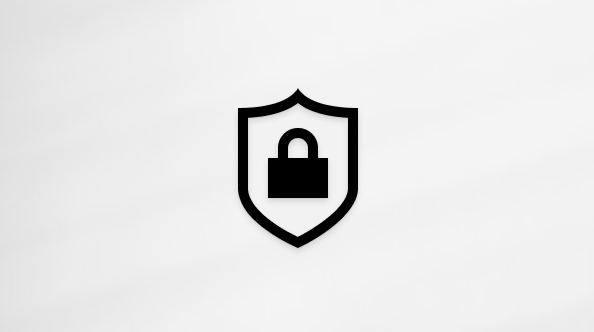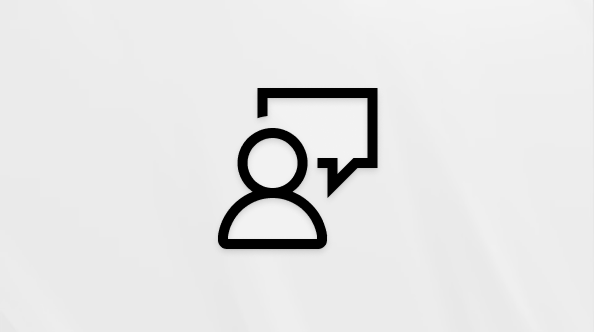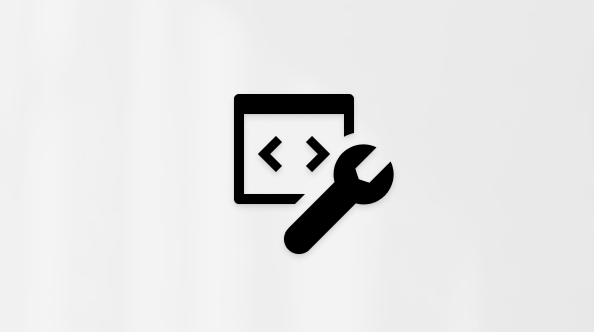This article is for people with visual or cognitive impairments who use a screen reader program such as Windows Narrator, JAWS, or NVDA with Microsoft 365 products. This article is part of the Microsoft 365 screen reader support content set where you can find more accessibility information on our apps. For general help, visit Microsoft Support.
Use Teams for personal and small business use with your keyboard and a screen reader to make use of the Chat in Windows 11. We have tested it with Narrator, JAWS, and NVDA, but it might work with other screen readers as long as they follow common accessibility standards and techniques. The Chat in Windows 11 in your taskbar lets you directly access key features of Microsoft Teams and launch the app itself.
Notes:
-
New Microsoft 365 features are released gradually to Microsoft 365 subscribers, so your app might not have these features yet. To learn how you can get new features faster, join the Office Insider program.
-
To learn more about screen readers, go to How screen readers work with Microsoft 365.
-
These instructions assume that the virtual PC cursor mode is used with JAWS. Recent versions of JAWS no longer have the virtual PC cursor mode set as default for Microsoft Teams. For instructions on how to switch the virtual PC cursor mode on, refer to the section "Enable the JAWS virtual cursor" in Use a screen reader to explore and navigate Microsoft Teams.
In this topic
Elements of the Chat in Windows 11
By default, the Chat in Windows 11 can be accessed from the Chat icon in your Windows 11 taskbar when you are signed in to Microsoft Teams. It contains the following main elements:
-
In the top row, the Meet and Chat buttons
-
In the main content area, the Search button, the Recent chats list, and the Synced contacts list
-
In the bottom row, the Open Microsoft Teams button
-
In the upper-right corner, the Give feedback and What’s new buttons
To move between elements, press the Tab key or Shift+Tab.
Explore and navigate the Chat in Windows 11
To navigate inside the Chat in Windows 11:
-
To create a new meeting, press Shift+Tab until you hear "Meet," and then press Enter. The focus is on the Start a meeting now button. Press Enter to start a meeting immediately, or if you want to schedule a meeting for later, press the Down arrow key until you hear "Schedule a meeting," and then press Enter. The Invite people to join you or New meeting dialog box opens, and the Chat in Windows 11 is closed.
-
To open a new chat conversation, press Shift+Tab until you hear "Chat," and then press Enter. The meeting or conversation opens in a new window and the Chat in Windows 11 is closed.
-
To browse the Recent and Synced contacts lists, press the Tab key until you hear "Recent," "Chats, tree view," or a name of a chat. Then use the Up and Down arrow keys to find the chat you want. When you find the chat you want, press Enter to open the chat.
-
To filter the Recent and Synced contacts lists, press the Tab key or Shift+Tab until you hear "Search," press Enter, and then type your search term. The contents of the lists are filtered according to the search term. Then press the Tab key two times. The focus is on the Recent chats list. Browse the results with the Up and Down arrow keys. To remove the search filter, press Shift+Tab until you hear "Close search," and then press Enter.
-
To open Teams for personal and small business use, press the Tab key until you hear "Open Microsoft Teams," and then press Enter. The app main window opens and the Chat pane is closed.
Notes:
-
To make your experience even better, Microsoft Teams (free) has introduced a new feature called mini Teams window. The mini Teams window lets you chat and call without switching apps.
-
To use this feature, you need to update both Teams and Windows 11. If you don't want to update right away, you can still use Chat in Windows 11 until your device prompts you to update or you choose to do so. For more information about mini Teams window, refer to Get started with Microsoft Teams (free) in Windows 11.
See also
Keyboard shortcuts for Microsoft Teams for personal and small business use
Set up your device to work with accessibility in Microsoft 365
Use a screen reader to set up Teams for personal and small business use
Technical support for customers with disabilities
Microsoft wants to provide the best possible experience for all our customers. If you have a disability or questions related to accessibility, please contact the Microsoft Disability Answer Desk for technical assistance. The Disability Answer Desk support team is trained in using many popular assistive technologies and can offer assistance in English, Spanish, French, and American Sign Language. Please go to the Microsoft Disability Answer Desk site to find out the contact details for your region.
If you are a government, commercial, or enterprise user, please contact the enterprise Disability Answer Desk.











